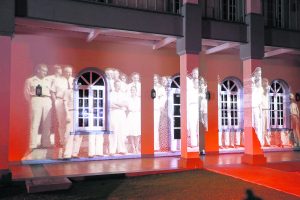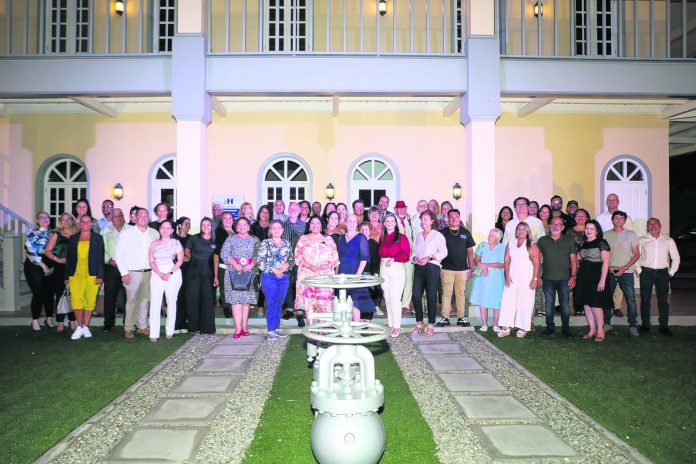On Friday night, Minister of Culture Xiomara Maduro had the pleasure of unveiling a cultural project, the ‘Historical Route of Eagle.’ It is an initiative project by the Aruba Monument Fund Foundation together with students from the Hogeschool van Rotterdam SUS Atelier, Glen Gordijn, and student Ricardo Arends, which tells the story of the second refinery of Aruba, Arend Petroleum Company known as Eagle Refinery, the Eagle neighborhood, and Aruba’s important role for allies during World War II.

On this occasion, Minister Maduro shared a bit of the history of the Eagle neighborhood. In the early 1920s, Aruba had two refineries. In 1924, Lago Oil & Transport Ltd was established, followed by De Arend Petroleum Maatschappij in 1927. These two refineries played a significant role in World War II as they supplied oil to the allies. It was from the ‘Arend’ refinery that this neighborhood got its name ‘Eagle,’ as well as our ‘Eagle Beach.’
Minister Maduro shared a bit of history: “This Eagle refinery employed more than seven thousand workers from 58 different countries. In this area, the refinery built a factory to refine oil, a laboratory, and a fire station. They also built their headquarters, which is exactly the building where we stand today.” The official also mentioned that the refinery built special houses for refinery personnel, some houses in the neighborhood, the Eagle tennis club, and the hospital that still stands there.
Aruba played an important role in World War II with these two refineries. Germany had its eyes on Aruba, and they sent a submarine to destroy these refineries to prevent the allies from getting their fuel. The submarine attacked the tanker Arkansas and killed several people, including Bonerians. However, the submarine failed in its mission to destroy the refineries, thanks to our Lord God.
According to the official, in 2018, she received an invitation from the Aruba Monument Fund Foundation for a presentation by a group of students from Hogeschool Rotterdam, who, in just two weeks, researched, inventoried, and identified the visible sites in the Eagle area, as well as those no longer present, to create a historical route with the aim of reviving the practically forgotten history of the Eagle area. After several years of hard work and perseverance, this beautiful project was realized with financial assistance from Vfonds. The ‘Eagle History Tour’ project is of utmost importance as it will illuminate parts of our past, educate, and also honor the sacrifices made during one of the darkest chapters in our history. It is not only about buildings and objects but also about commemorating the victims of both World Wars.
The story of the Eagle refinery, once a symbol of Aruba’s industrial power alongside Lago in San Nicolas, tells us about Aruba’s development from its beginnings in 1924 to its dismantling in the fifties and sixties, making way for tourism, which until today is Aruba’s most important economic pillar.
The ‘Eagle History Tour’ project will create a connection between Aruba’s history, industrial cultural heritage, and tourism, creating a new attraction for our visitors while educating locals and especially the younger generations about Aruba’s industrial history and the important role of the Eagle refinery in the World Wars, as the official emphasized in her speech. Furthermore, in the near future, plaques will be placed at five different sites with QR codes containing important historical information in four different languages, as well as art objects and educational programs.




















